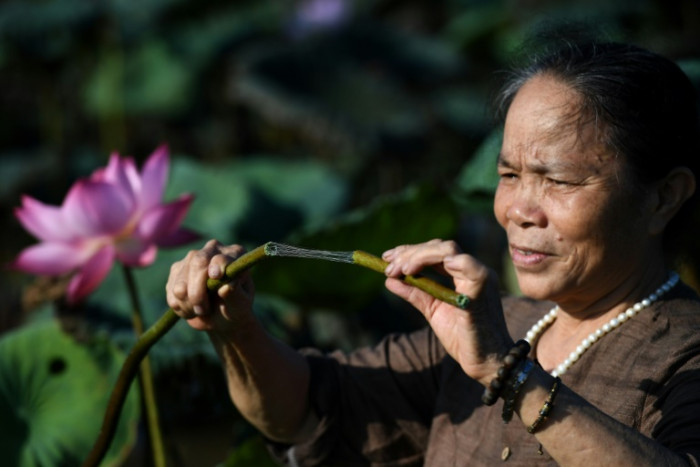Lotus silk is one of the rarely found fabrics in the world. It is produced only on a small scale across Cambodia, Myanmar and more recently in Vietnam. Only several skilled crafts people across the globe extract this natural fibre. But making this silk isn’t easy. Extracting enough Lotus silk for one scarf can take up to two months, and the final product can cost 10 times as much as regular silk.
What makes it so expensive?
Silk usually comes from silkworms. People have been extracting traditional silk for generations now. Luxury clothes are created after harvesting the threads from silkworms . The worms are placed on wide trays and they feed on mulberry leaves. The caterpillars sensitively spin threads to create their cocoons. But though these insects require utmost care, they do most of the hard work on their own.
But lotus silk extraction is not that easy. The lotus plants are harvested between April and October. One can easily differentiate between the bright silk and the paler lotus silk. Lotus silk seeks more human efforts as they need to be extracted from the stem of the lotus flower using hands.
In the case of lotus silk, the stem is selected and the silk inside is extracted. Each stem contains a minuscule amount of thin, sticky fibres which must be rolled together and dried. The threads need to be processed and dried. The threads need to be processed within 24 hours while they are still wet; or else, they might break. The dried threads are weighed down and carefully hand spooled. Then they are put into the loom. These fibres can easily damage, but once woven can be as durable as traditional silk.
The finished product is unlike any other fibre. It’s smooth and silky, breathable like linen fabric and slightly elastic. These luxurious traits have made it popular among tourists searching for rare souvenirs. As per the sources, it was recently picked up by the International fashion trend searching for new luxury fibre.

